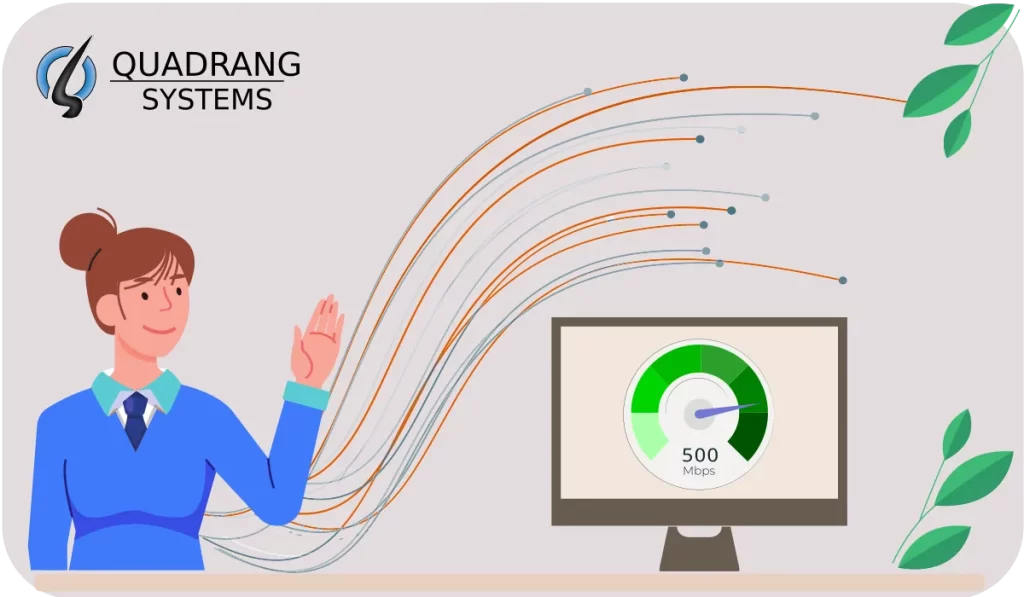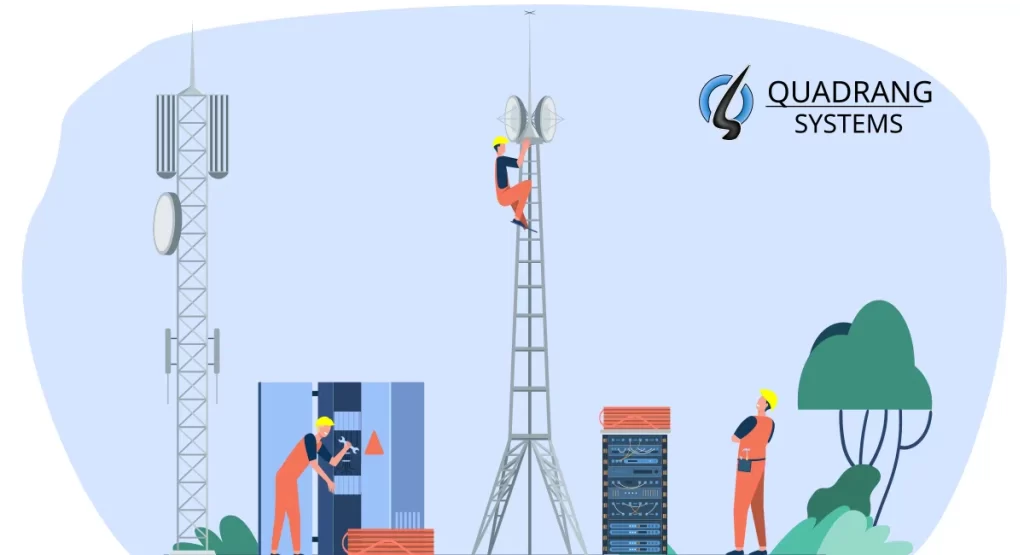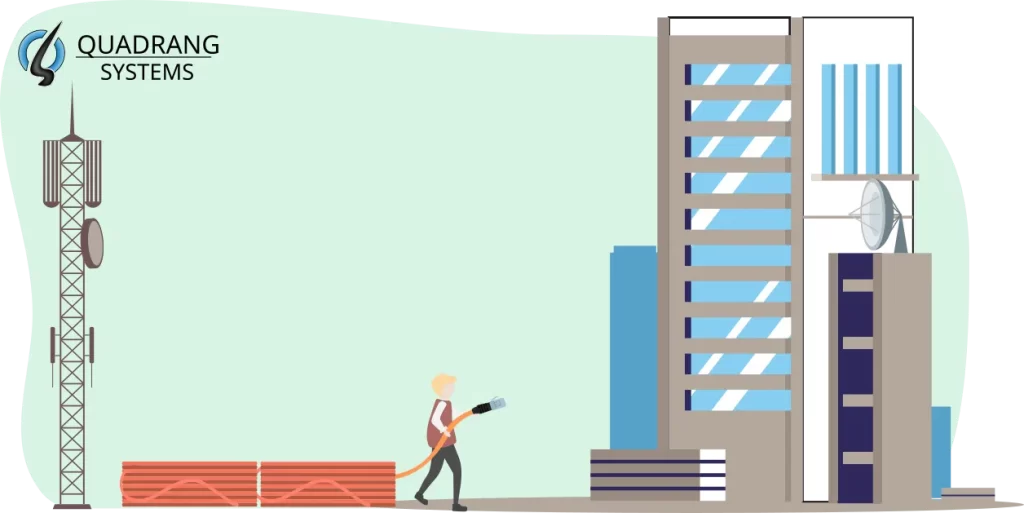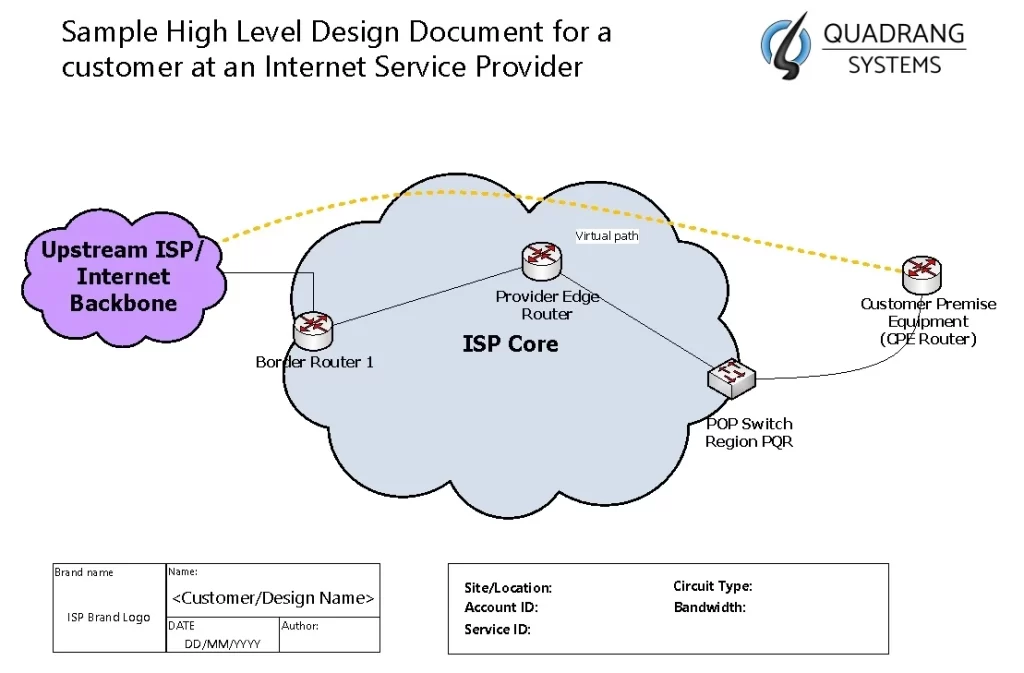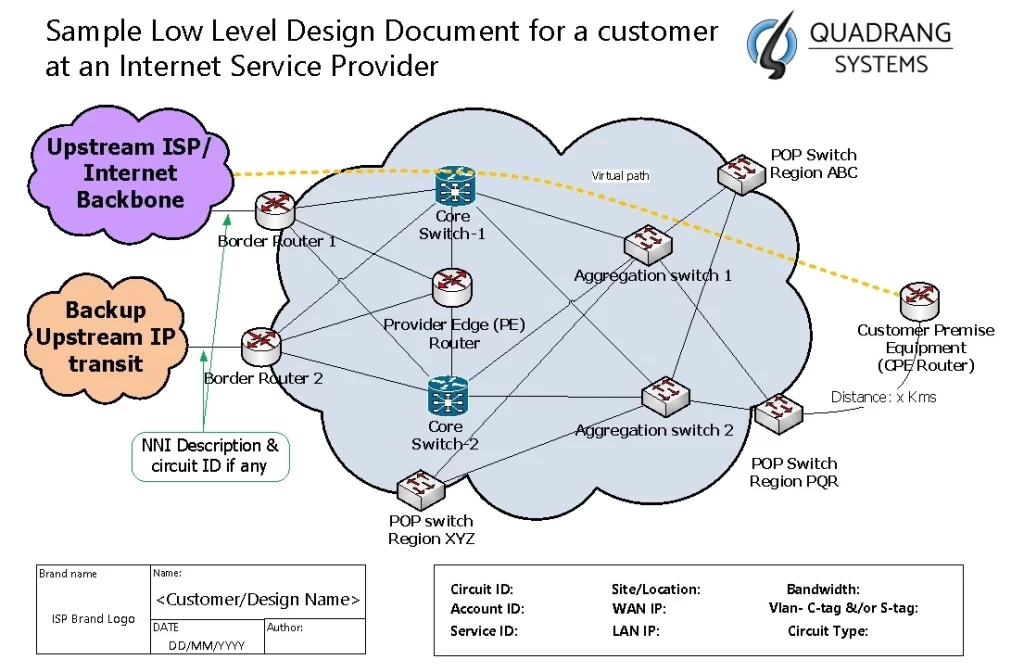The subtle differences between Bandwidth & Speed in Networks
Introduction
In the era of an interconnected world and modern internet, the debate between Speed and Bandwidth in TCP/IP networks is not merely a matter of technical jargon; it’s the lifeblood of ISPs for efficient data transmission. It is also one of the most common questions on the internet forums and on networking interviews. As a fast-growing IT Services provider, we delve into the heart of this debate to illuminate the crucial differences, advantages, and how it matters for customer’s data circuits.
Definition of Bandwidth and Speed
Bandwidth: The Broadness of Data Channels
The term ‘Bandwidth’ can be used to describe the capacity of a network connection, such as the maximum amount of data that can be transmitted over a wired or wireless connection. To rephrase this, Bandwidth refers to the maximum “width” or amount of data that can be sent over a network or internet connection within a given period of time. It is usually measured in bits per second (bps or b/s), kilobits per second (Kbps or Kb/s), megabits per second (Mbps or Mb/s), or gigabits per second (Gbps or Gb/s). Note that these are smaller case ‘b’ for bits, not ‘B’ for bytes which is the term for data storage. That’s another debate non-tech savvy people have for years.
A good analogy is that of water and pipe where Pipe is the combination of physical data channel and logical capping/limits set to the channel and water being the data bits being sent through the pipe. The bigger the pipe’s capacity, more water can flow through.
Speed: The Velocity of Data Travel
On the other hand, the term “speed” refers to the rate at which data is transmitted over a network or internet connection. It is usually measured in the same units as bandwidth: bps, Kbps, Mbps, or Gbps. To put it simply, speed is the resultant output of bandwidth and other factors combined. Speed is the actual receivable end data rate for the customer/user.
While bandwidth is the maximum capacity of a network or internet connection, speed is the actual rate at which data is transmitted over that connection. Factors such as data rate capping, bandwidth policy, network congestion, signal interference, and distance between devices can affect the speed of a network or internet connection, even if the bandwidth is high.
To summarize, bandwidth represents the maximum capacity of a network or internet connection, while speed represents the actual rate at which data is transmitted over that connection.
The term “bandwidth” originally referred to the width of a frequency band, but it is now commonly used to refer to the amount of data that can be transmitted over a network.
A network with ample bandwidth can accommodate the required speed for multiple users simultaneously, each enjoying robust data streams without congestion. It’s the foundational infrastructure that supports the speed demands of modern applications, from high-definition video conferencing to seamless cloud computing.
Differentiating between Bandwidth and Speed
| Definition | Bandwidth | Speed |
| Measuring Unit | bps, Kbps, Mbps, Gbps | bps, Kbps, Mbps, Gbps |
| Key Factors | 1) Capacity of the networking equipment (routers, switches) 2) Physical limitations of the medium (e.g., cable, fiber optic, wireless). | 1) Customer’s subscription plan, (for ex. 100 Mbps or 1 Gbps) 2) Available network resources. |
| What it shows | The capacity of the network link | How fast data is actually moving through the network |
| Impact on Data transfer | Higher bandwidth allows for more data to be transferred at a given time, potentially reducing transfer times for large files or many simultaneous user connections. | Higher speed means data gets to its destination more quickly, reducing the time it takes for requests and responses in applications. |
| Limited by | Limited by maximum throughput of the physical medium/channel. Determined by physical limitations of the network infrastructure | Limited by network congestion, latency, and other factors. Determined by actual traffic, network congestion, and hardware/software |
| Importance | Critical for determining the maximum potential of a network | Reflects the real-time performance of the network |
| Example | A network link might have a bandwidth of 1 Gbps (gigabit/s) | Data transfer speed might be down to ~200 Mbps due to congestion |
One big misconception is that the higher the overall speed results in faster website and application loading experience. Actually any website or online application will load at it’s designed maximum speed which is optimally and depends on various factors like DNS resolution, Encryption, Server load, distance between the client and the server, ping times etc. which even after having higher bandwidth/speed cannot make much of a difference beyond a point.


